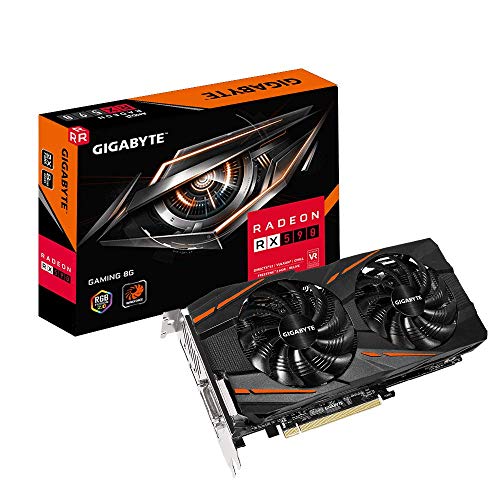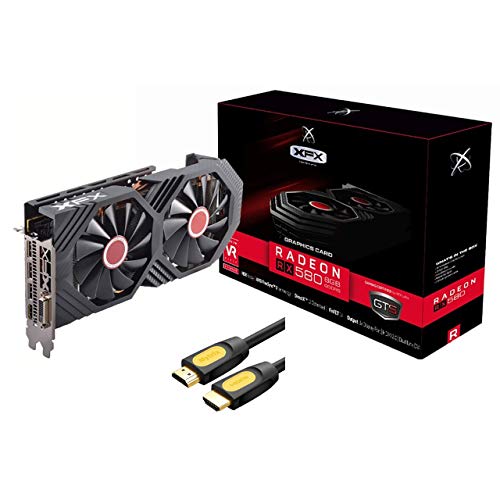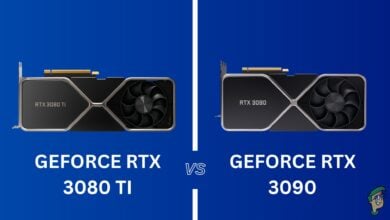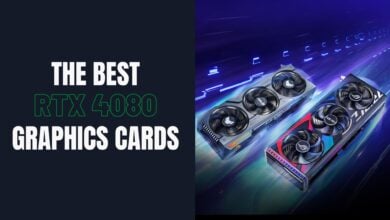5 Best GPUs for Mining Based on Hash Rate
While it may not be the best thing for the PC gaming industry, crypto-currency has really started to become an important part of the overall internet landscape. It was not long ago that most people doubted the longevity of any form of crypto-currency and refused to believe that it was even a real currency. However, now we have seen the rise of Bitcoin and alternate currencies to values that were thought impossible just a few years ago. For context, the value of one Bitcoin has crossed $60,000 as of the time of writing.
Crypto-currency has also played a major role in the massive stock shortage and rise in prices of PC components such as graphics cards, so it is understandable that mining is not held in the best regard by PC gamers. However, one cannot simply deny the fiscal potential and profitability of crypto-mining in today’s scenario. So in this roundup, we will take a look at the best GPUs for crypto-mining. This list takes into account multiple factors such as the mining performance, the hashrate, cost of entry, power consumption, daily profit, and days to break even in an ideal scenario. The ranking is based objectively on the best value offered among the various GPUs on the market today.
So with that out of the way, here are the 5 best GPUs for mining.
1. Nvidia GeForce GTX 1060 6GB
Affordable and Profitable
Pros
- High Mining Performance
- Low Cost of Entry
- Low Power Consumption
- Reasonable Temperatures
Cons
- Low Overall Profit
Memory: 6GB GDDR5 | Avg eBay Price: $271 | Mining Performance (MH/s): 25 MH/s | Mining Power (Watts): 90W | Daily Profit: $2.82 | Days to Break Even: 96
The Nvidia GeForce GTX 1060 6GB is a mid-range GPU based on the Pascal architecture that was released in 2016. The GeForce GTX 1060 6GB holds the crown for being the most common GPU among PC gamers according to the Steam Hardware Survey. This might make it an especially unbeatable value since many PC gamers might already have this GPU, and can therefore take advantage of its excellent crypto-mining capabilities.
The GTX 1060 6GB is armed with 6GB of GDDR5 memory and that really helps in crypto-mining. If you are on the market for a used or new GTX 1060, you should avoid the 3GB models since their gaming and mining performance is significantly worse than the 6GB models. The average eBay asking price for this GPU is $271 which is admittedly quite a lot for a 4-year old midrange GPU, but such is the current situation of the PC graphics card market.
In terms of raw numbers, the 1060 6GB delivers a hashrate of 25 MH/s which is quite good considering the age and market placement of the card. The card uses a relatively comfortable 90W of power while mining and the daily profit can be expected to be $2.82 in the current situation. At this rate, the card would take about 96 days to return the initial investment if you were to buy the card at the listed price.
The 1060 6GB is quite a tame card in terms of power draw, so its running cost should not be outrageous by any means. The card can also handle 1080p gaming on the side if you want to dabble in some action while the card is not crypto-mining. There are several variants of the card out there, but our pick is the MSI Gaming GTX 1060 6GB which is an entry-level variant of the card. This variant is cheaper than many other ones and can therefore maximize your profits while delivering solid cooling and acoustic performance.
While the mining performance of the 1060 6GB is not amazing if you view it as a solitary number, but it makes an excellent value when it is viewed in conjunction with the price of the card. The 1060 6GB, therefore, offers a great value crypto-mining experience at a reasonable cost of entry and can provide some pretty decent profits if you are to go down this route.
2. AMD Radeon RX 590 8GB
Another Solid Mining Card
Pros
- Good Performance in Mining
- Very Profitable
- Relatively Higher Availability
- Reasonable Power Draw
Cons
- Relatively Higher Price
Memory: 8GB GDDR5 | Avg eBay Price: $336 | Mining Performance (MH/s): 28.6 MH/s | Mining Power (Watts): 130W | Daily Profit: $3.16 | Days to Break Even: 106
The AMD RX 590 was one of the least interesting graphics cards when it was released. It was essentially a slightly updated RX 580, which in itself was a slightly updated RX 480. So as far as gaming goes the RX 590 was quite lukewarm but it has great potential when it comes to cryptocurrency mining. It has solid performance if we solely consider its raw numbers, but its real strength is its relatively low cost of entry and quite a decent value proposition.
The RX 590 has 8GB of GDDR5 memory which comes in quite handy in Cryptocurrency mining. Buyers should avoid the 4GB variant of the 590 if they are looking to mine crypto on it as that would lead to less performance. The average eBay price of the Radeon RX 590 8GB is $336 at the time of writing, and that can get you 28.6 MH/s in terms of raw mining performance. The RX 590 uses around 130W while mining and is one of the relatively more power-hungry cards out there. You can expect a daily profit of $3.16 and it takes around 106 days to break even at this rate.
The RX 590 is also a capable gaming card and can deliver solid performance at 1080p. The RX 590 can play all modern AAA games at 1080p on high settings and deliver an average of 60 FPS or thereabouts. It is also moderately power hungry, although not as much as some of the Vega cards of this era. The RX 590 also has significantly higher availability than the RX 580 or similar cards due to its relatively higher price and poor overall public reception in the first place.
Our recommended variant for the RX 590 is the basic Gigabyte Gaming RX 590 8GB Windforce which is an entry-level variant of the RX 590. It has decent cooling performance and quiet fans which can really help while mining. The model would be relatively cheaper to obtain, so it is a good option to look for if you’re in the market for a used or new RX 590 8GB.
Overall, the RX 590 8GB is a very solid crypto-mining GPU due to its excellent value and relatively lower cost of entry. It delivers good profit numbers and is easier to manage than some of the other mining GPUs out there.
3. AMD Radeon RX Vega 56 8GB
High Performance, Higher Price
Pros
- Very High Mining Performance
- HBM2 Memory
- High Resale Value
Cons
- High Power Draw
- Usually Higher Temperatures
Memory: 8GB HBM2 | Avg eBay Price: $483 | Mining Performance (MH/s): 39.2 MH/s | Mining Power (Watts): 174W | Daily Profit: $4.34 | Days to Break Even: 111
The Radeon RX Vega 56 is a huge step up over the Radeon RX 590 and the RX 500 series of graphics cards in terms of crypto-mining performance. The Vega 56 was one of two cards developed by AMD on the Vega architecture. The cards also deliver excellent gaming performance, although the general public reception for the Vega 56 and Vega 64 at the time of launch was disappointing at best. Nevertheless, the Radeon RX Vega 56 is a great choice for moderate crypto-mining activity.
The Vega 56 has 8GB of HBM2 memory which offers huge improvements over the standard GDDR memory types due to its massive bandwidth. The cost of entry for a Vega 56 is pretty high though, at $483 on eBay at the time of writing. This would be the MSRP of an RX 6700 XT in an ideal world, but unfortunately such is not the case currently. The mining performance of the Vega 56 is at 39.2 MH/s and it consumes around 174W while doing so. At this rate, it can deliver a daily profit of $4.34 and would take 111 days to break even.
The Vega 56 is an interesting card to maintain. When it is completely stock, it is quite a power-hungry graphics card and has the tendency to run hot as well, which is not helped by the complete lack of any third-party AIB models. The real trick with the Vega cards is undervolting. When it is undervolted, the Vega 56 can actually perform significantly better than at stock, while lowering the power draw and subsequently lowering temperatures as well. This makes it an ideal option for those enthusiasts who love to tinker with their graphics cards.
The RX Vega 56 is an excellent gaming GPU as well, and it can play all AAA games at 1080p at High-Ultra details at 60 FPS or more. It can also dabble in some entry-level 1440p gaming in some older AAA titles or lighter eSports titles. The Vega 56 does not have many 3rd party AIB models, so you would have to make do with a blower-style model like our recommended MSI Airboost RX Vega 56 8GB. Undervolting would really help with the temperature control of this card.
The Radeon RX Vega 56 is a significant step-up in mining performance when compared with the RX 590 or similar cards, but it also comes at a higher cost of entry. It is also slightly more difficult to maintain due to its high power draw and hot internals. Thankfully, there are a few tricks to keep that under control and maximize profits quite easily.
4. AMD Radeon RX Vega 64 8GB
Top Mining Performance for a Price
Memory: 8GB HBM2 | Avg eBay Price $519 | Mining Performance (MH/s): 42.5 MH/s | Mining Power (Watts): 254W | Daily Profit: $4.55 | Days to Break Even: 114
The Radeon RX Vega 64 is essentially the same as a Vega 56, but quite a bit more powerful. It has the same 8GB of HBM2 memory that is great for crypto-mining, but this time there are 64 compute units as compared to 56 on the Vega 56, hence the name. The Vega 64 is another high performer in terms of the overall mining performance and profit numbers, although it is quite a bit more expensive as well.
The average asking price for a Vega 64 on eBay at the time of writing is $519 which is ridiculous if we compare it to the “hypothetical” MSRP of modern GPUs. The mining performance of the card lies at a strong 42.5 MH/s while it consumes a whopping 254W of power while mining. This is one of the most power-hungry cards ever released and just like the Vega 56, should be undervolted before mining. The daily profit can be expected at $4.55 and it takes around 114 days to break even.
The Vega 64 is also a fantastic gaming GPU that is still capable of gaming at 1080p and 1440p. It can play most AAA titles at 1440p at Medium-High details at 60 FPS while dropping down to 1080p allows the Vega 64 to cross the 60 FPS mark in almost all games at Ultra settings. The Vega 64 has a major problem of power draw though, and it should be undervolted quite heavily if you are looking to use it for extended periods in mining.
Overall, the Vega 64 makes slightly less sense than the Vega 56 for mining due to its higher cost of entry and higher power draw, but it delivers a higher hashrate as well. It is up to the potential buyer to decide whether the extra mining performance is worth the hassle at all.
5. AMD Radeon RX 580 8GB
Competitive but Expensive
Pros
- Good Mining Performance
- Reasonable Power Consumption
Cons
- More Expensive than RX 590
- High Cost of Entry
- Hard to Find
Memory: 8GB GDDR5 | Avg eBay Price: $363 | Mining Performance (MH/s): 29 MH/s | Mining Power (Watts): 135W | Daily Profit: $3.20 | Days to Break Even: 114
The Radeon RX 580 8GB is an iconic GPU that was the ideal budget gaming GPU for a long time before it became the mining GPU that we know today. The RX 580 8GB is almost synonymous with mining nowadays, and it seems like this is the GPU that gets vanished from the market first when there is any surge in Cryptocurrency.
It is understandable, however, because the RX 580 delivers great mining performance at a reasonable cost of entry while keeping power consumption under check as well. It also has 8GB of GDDR5 memory, but as of the time of writing, the average asking price on eBay for a 580 8GB is $363 which is EVEN MORE than the RX 590. This is due to the relative scarcity of the RX 580 in the market.
It has a hashrate of 29 MH/s which is also slightly higher than the RX 590, and it takes 135W of power to do so. The daily profit can be up to $3.20 and it takes around 114 days to break even. The RX 580 is also relatively harder to find than the RX 590 due to the aforementioned reasons. Gaming performance of the RX 580 is quite similar to the RX 590 although it usually lags behind the RX 590 by a margin of 2-3%. Still, the card can handle 1080p gaming quite well and can play most AAA games at Medium-High details at an average of 60 FPS.
Out of the various 3rd party AIB models of the Radeon RX 580 8GB, we recommend the XFX Radeon RX 580 8GB GTS XXX variant. It is quite a well-built variant with excellent cooling performance and a couple of quiet fans. It is a good overclocker as well, although that might depend more on the overall quality of the silicon. If you are able to choose the variant of your choice for the RX 580, the XFX GTX XXX is one to look out for.
It’s quite clear that the Radeon RX 580 8GB is still a great crypto-mining card, but due to the scarcity of the card in both the new and used markets and the relative cost of entry, it would be wise to look for other options such as the Radeon RX 590 8GB to fulfill your mining needs. If, however, you do find an RX 580 8GB listed for under $330 in the current situation, then there is not a lot of harm in grabbing that deal.
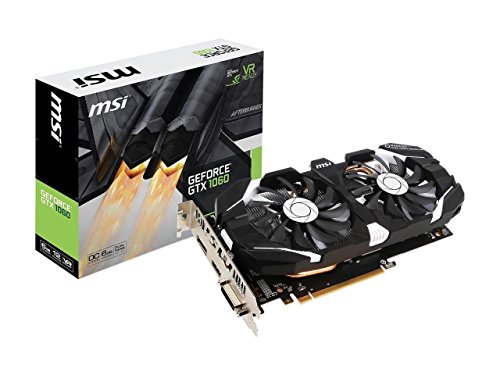
 Check Price
Check Price